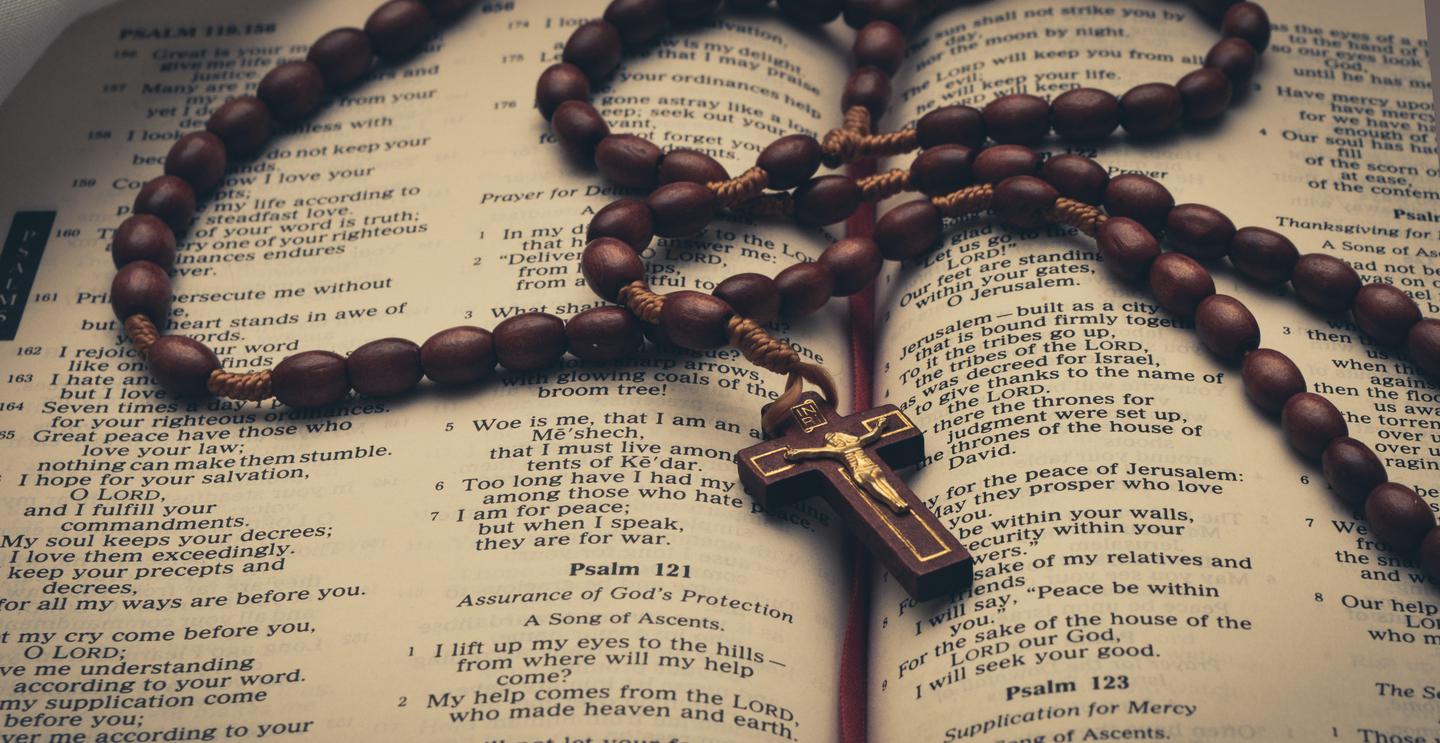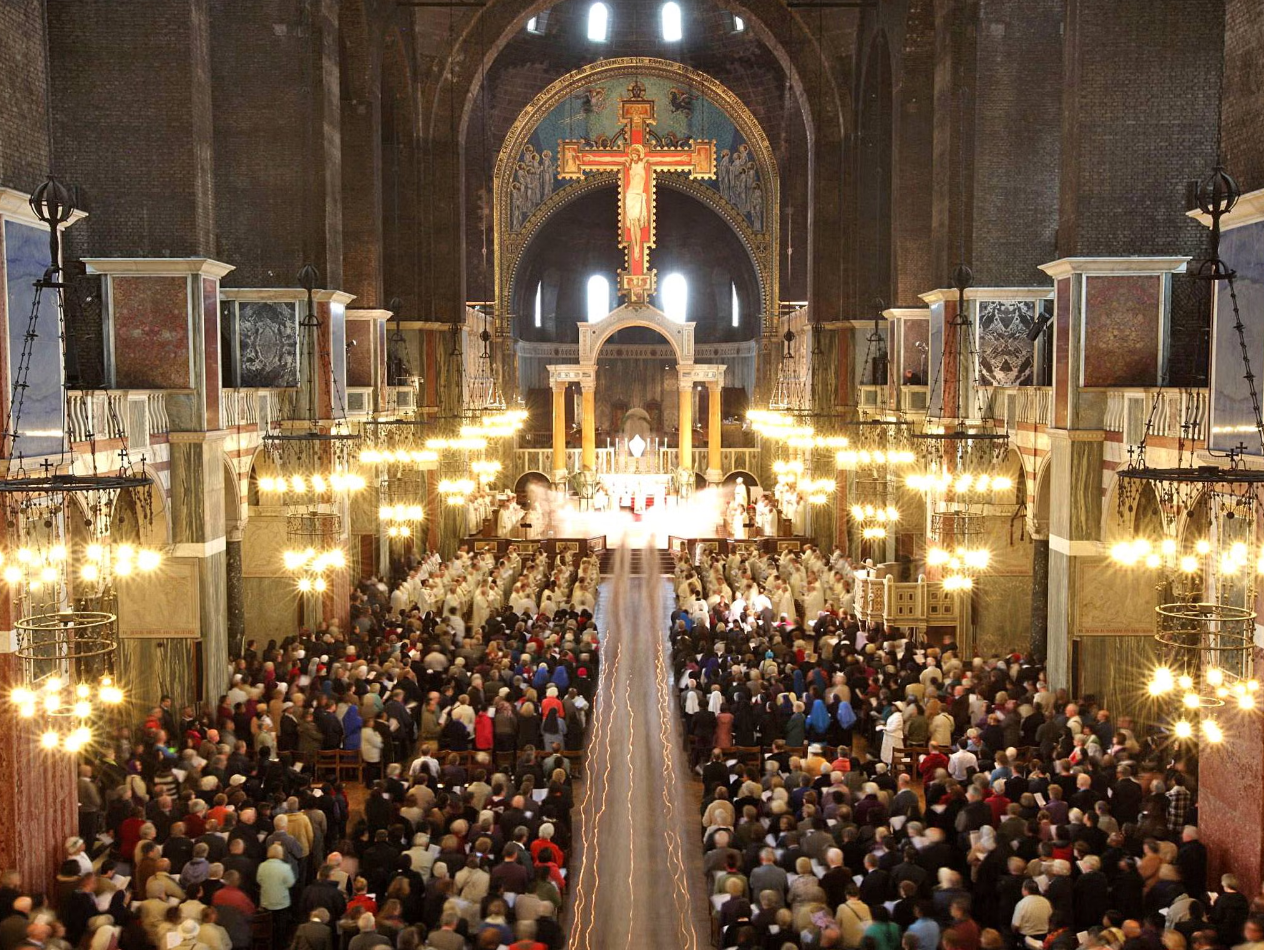Theological Concerns with the Rosary
1. Repetitive Prayer and Vain Repetitions
The Rosary involves reciting numerous prayers, including 53 "Hail Marys" in a standard five-decade Rosary. This practice conflicts with Jesus’ teaching on prayer: “But when ye pray, use not vain repetitions, as the heathen do: for they think that they shall be heard for their much speaking” (Matthew 6:7, KJV). The repetitive nature of the Rosary, especially its formulaic structure, resembles the "vain repetitions" Jesus cautioned against. Furthermore, since Catholic doctrine does not align with biblical salvation—relying instead on works, sacraments, and tradition—these repetitive prayers are rendered vain, as they cannot contribute to true salvation, which is by grace through faith alone “For by grace are ye saved through faith; and that not of yourselves: it is the gift of God: Not of works, lest any man should boast” (Ephesians 2:8-9, KJV). Prayer in Scripture is depicted as heartfelt, direct communication with God, not a mechanical recitation devoid of saving faith.
2. Prayers to Mary
The "Hail Mary" prayer, central to the Rosary, begins, “Hail Mary, full of grace, the Lord is with thee; blessed art thou among women.” While the first part draws from Luke 1:28 and Luke 1:42, the second part, “Holy Mary, Mother of God, pray for us sinners now and at the hour of our death,” is not found in Scripture. This addition elevates Mary to a mediatorial role, which contradicts the Bible’s clear teaching: “For there is one God, and one mediator between God and men, the man Christ Jesus” (1 Timothy 2:5, KJV).
The Rosary’s focus on Mary as an intercessor undermines the sufficiency of Christ’s mediation. Catholic doctrines that assign intercessory roles to Mary or saints lack biblical support and divert attention from Christ’s finished work on the cross. Scripture instructs believers to pray directly to God in Jesus’ name: “And whatsoever ye shall ask in my name, that will I do, that the Father may be glorified in the Son” (John 14:13, KJV).
3. Idolatry and Veneration
The Rosary often involves meditating on "mysteries" while gazing at images or statues of Mary or Jesus. This practice risks violating the Second Commandment: “Thou shalt not make unto thee any graven image, or any likeness of any thing that is in heaven above, or that is in the earth beneath, or that is in the water under the earth” (Exodus 20:4, KJV). While Catholics claim this is veneration, not worship, the distinction blurs when physical objects become focal points of devotion. Foxe’s Book of Martyrs documents how such practices historically led to idolatry, as believers were drawn away from worshiping God alone.
4. Salvation by Works
The Rosary is often promoted as a means of obtaining grace, indulgences, or spiritual merit. For example, Catholic tradition teaches that praying the Rosary can reduce time in purgatory. However, the Bible teaches that salvation is by grace through faith alone: “For by grace are ye saved through faith; and that not of yourselves: it is the gift of God: Not of works, lest any man should boast” (Ephesians 2:8-9, KJV). The idea that repetitive prayers contribute to salvation contradicts the sufficiency of Christ’s atonement: “By the which will we are sanctified through the offering of the body of Jesus Christ once for all” (Hebrews 10:10, KJV).
Practices like the Rosary often introduce a works-based salvation, which undermines the gospel. The Rosary’s association with indulgences further conflicts with the biblical truth that Christ’s sacrifice fully paid for sin: “And you, being dead in your sins… hath he quickened together with him, having forgiven you all trespasses” (Colossians 2:13, KJV).
Biblical Model of Prayer
Scripture provides clear guidance on how to pray, which contrasts with the Rosary’s structure. Jesus taught the Lord’s Prayer as a model, not a formula to be repeated mechanically: “After this manner therefore pray ye: Our Father which art in heaven, Hallowed be thy name” (Matthew 6:9, KJV). Prayer is to be directed to God the Father, in Jesus’ name, with a focus on His glory, not human intermediaries.
Philippians 4:6 instructs, “Be careful for nothing; but in every thing by prayer and supplication with thanksgiving let your requests be made known unto God” (KJV). Prayer should be personal, varied, and rooted in faith, not bound by repetitive formulas or beads.
Addressing Common Defenses
1. "The Rosary Helps Me Meditate on Christ"
While some claim the Rosary aids meditation on Christ’s life, its structure often shifts focus to Mary. The "mysteries" may include events from Jesus’ life, but the repetitive prayers to Mary dominate the practice. True meditation on Christ should center on Scripture, as Psalm 1:2 says: “But his delight is in the law of the LORD; and in his law doth he meditate day and night” (KJV). The Bible, not the Rosary, is the God-ordained means of knowing Christ.
2. "Mary Is Honored, Not Worshiped"
Catholics argue that Mary is venerated, not worshiped. However, the Rosary’s prayers and focus on Mary as a mediator blur this distinction. The Bible reserves worship and intercessory roles for God alone: “I am the LORD: that is my name: and my glory will I not give to another” (Isaiah 42:8, KJV). Elevating Mary to a near-divine status, as seen in titles like "Queen of Heaven," echoes pagan practices condemned in Scripture (Jeremiah 44:17-19, KJV).
3. "The Rosary Is a Tradition"
Catholic tradition is often cited to justify the Rosary, but Scripture warns against prioritizing human tradition over God’s Word: “Making the word of God of none effect through your tradition, which ye have delivered: and many such like things do ye” (Mark 7:13, KJV). Traditions like the Rosary lack apostolic authority and cannot supersede biblical teaching.
Conclusion
The Rosary, while a cherished Catholic practice, is incompatible with biblical Christianity. Its repetitive prayers, rendered vain by Catholicism’s departure from biblical salvation, its focus on Mary as a mediator, its potential for idolatry, and its association with works-based salvation contradict clear teachings in the King James Bible. Believers are called to pray directly to God through Christ, relying on Scripture alone as the authority for faith and practice: “All scripture is given by inspiration of God, and is profitable for doctrine, for reproof, for correction, for instruction in righteousness” (2 Timothy 3:16, KJV).
For further study, consider the resources at https://www.bible.ca/ for a detailed examination of Catholic doctrines, or Foxe’s Book of Martyrs for historical context on the development of such practices. Let us return to the simplicity of biblical prayer, trusting in Christ alone as our mediator and Savior.




